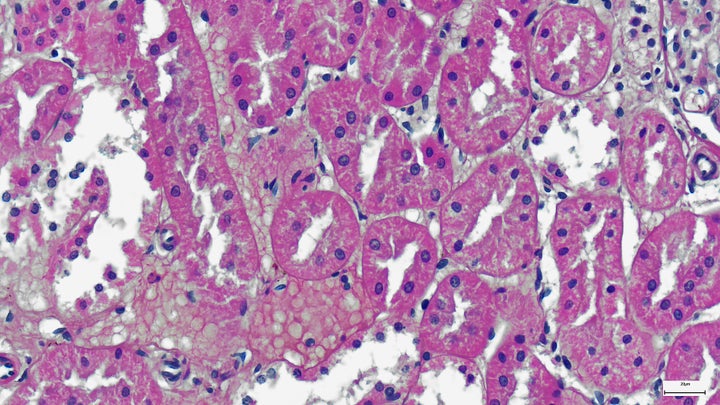
If you, too, count “doom scrolling” as one of your main hobbies, you’ll probably have heard about the 46,000-year-old extinct species worm that was recently unfrozen from the Siberian permafrost.
The cursed creature, which would have been alive while wooly mammoths, sabre-toothed tigers, and more roamed the earth, had been chillin’ 40 metres below ground for the last tens of thousands of years. After spotting the specimen in 2018, scientists decided to unfreeze it – eventually bringing the worm back to life.
It’s an example of cryptobiosis, or the ability of certain plants and animals to stay alive, even for a very, very long time, in extreme conditions. It’s not the first time we’ve seen this – even humans have survived freezing before – but it is our most extreme example.
Teymuras Kurzchalia, professor at the Max Planck Institute of Molecular Cell Biology and Genetics, Dresden, and one of the scientists behind the study, told CNN that most cases of ‘defrosting’ creatures happened after decades, not millennia.
“One can halt life and then start it from the beginning. This a major finding,” the scientist said.
Of course, it is – but its implications are pretty terrifying. After all, pathogens, as well as creatures like worms, lie under the permafrost.
A new study reveals the dangers lying under the ice
In the study Time-Travelling Pathogens And Their Risk To Ecological Communities (published in the journal PLOS Computational Biology), researchers “calculated the ecological risks posed by the release of unpredictable ancient viruses.”
“In 2014, a giant “zombie” Pithovirus sibericum virus was revived from 30,000-year-old Siberian permafrost. And in 2016, an outbreak of anthrax (a disease caused by the bacterium Bacillus anthracis) in western Siberia was attributed to the rapid thawing of B. anthracis spores in permafrost. It killed thousands of reindeer and affected dozens of people,” the researchers told Phys Org.
In the study, scientists digitally stimulated the release of ice-bound pathogens into the ‘wild’. The diseases ”could often survive and continue evolving”; 3% of the diseases dominated the environment they entered, and 1% were “unpredictable”. One worst-case scenario showed a 30% depletion of wildlife.
“Our simulations show that 1% of simulated releases of just one dormant pathogen could cause major environmental damage and the widespread loss of host organisms around the world,” they add.
Oh, good.
Global warming has a large part to play in the release of pathogens
As the planet gets hotter, and as more ice melts, more and more defrosted diseases are likely to be released.
“The unprecedented rates of melting of glaciers and permafrost are now giving many types of ice-dormant microorganisms concrete opportunities to re-emerge, bringing to the fore questions about their potential,” the authors of the study say.
‘Only’ 1% of the pathogens had a truly disastrous effect on the stimulated environment, and some even added an increase (of 12%) of biodiversity in the theoretical environment. But the scientists behind the study stress that “The risk from this small fraction of pathogens might seem small, but keep in mind these are the results of releasing just one particular pathogen in simulated environments. With the sheer number of ancient microbes being released in the real world, such outbreaks represent a substantial danger.”
“While we didn’t model the potential risk to humans, the fact that “time-traveling” pathogens could become established and severely degrade a host community is already worrisome,” they add.
So, uh, you know – have a nice week!